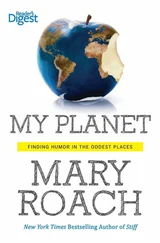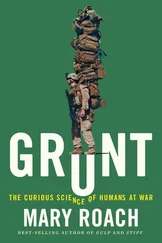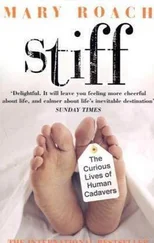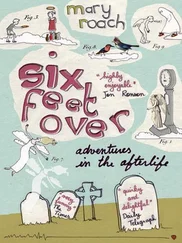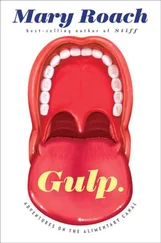According to FARU manager Joe Neigut, 30 percent of the people who sign on to bed-rest studies say they are doing so not only for money, but to be a part of the space effort. As Leon says, “It’s as close as I’m going to get to being an astronaut.” At the very least, the association with spaceflight puts a luster on the undertaking. Knowing this, the staff entreat astronauts to write thank-you messages on 8-by-10 glossies. Every now and then, an astronaut drops by to deliver them in person. Aaron got an in-person visit but does not recall the man’s name. Tim received an autographed photo of Peggy Whitson. (“A total BAMF [68] I had to look up BAMF on Google. It stands for Bad Ass Motherfucker, but don’t tell that to the Berkeley Avenue Mennonite Fellowship or the Builders’ Association of Metropolitan Flint.
astronaut,” he called her.)
Tim is back from the kitchen. There is no extra food for me, and that’s okay. “Did I miss anything?”
“Yuh,” Aaron says. “I moved to the left a bit.”
THE BIGGEST SKELETON at Johnson Space Center belongs to John Charles. Charles is 6 feet 7. When he was ten, he knew he wanted to be an astronaut. His skeleton, as though aware of its fate in space, sabotaged Charles’s dreams by growing past the astronaut height cutoff. Charles got his Ph.D. in physiology and went to work for NASA. It is his job to do what he can to protect the bodies and bones of astronauts.
Charles and I spoke one recent afternoon in the Lyndon B. Johnson Meeting Room in the public affairs building at Johnson’s namesake, the Johnson Space Center. A chaperone from the Public Affairs Office sat quietly in the corner, as though Charles and I might otherwise leap into each other’s arms there amid the plaques and signed proclamations of the Johnson era. Charles must put the public affairs people on edge. He is known for speaking his mind freely and sits high enough on the ladder of command not to worry too much about the consequences.
As on Earth, weight-bearing exercise is the best way to hang on to your bone. In zero gravity, of course, you have to create your weight. The problematic and expensive way to do this is to outfit the space station with a rotating room, a huge, inhabitable centrifuge that spins astronauts outward toward the walls, creating artificial gravity. (Keir Dullea can been seen jogging on one in 2001: A Space Odyssey. ) The funky and affordable alternative is to mimic weight by pulling astronauts’ bodies down into a treadmill belt as they jog. Typically this involves a harness and bungee cords and much cursing and chafing. It is not tremendously effective. Bone loss researcher Tom Lang says this kind of device pulls exercisers against the belt with about 70 percent of their bodyweight, a scenario that still translates to “massive bone loss.”
It’s unclear how much exercise helps. “Exercise is probably better than not exercising in space,” says Charles, “but we don’t know how much better, because we’ve never done the experiment.” No one wants to expose a control group to the sort of bone loss that could result from doing no exercise at all. “If you have hundreds of astronauts who’ve done different levels, you can pool them into groups and see that this group did slightly less and it had this effect, and this group used a treadmill, not a bike, and it had that effect. But we don’t have those large numbers. We have one person that used a bicycle and not a treadmill, one person that used a bike and then changed to a treadmill, and the first is a female in her forties and the second is a male in his sixties. All we can do is a sort of grouped average. The grouped average says that we have countermeasures that still are not protecting astronauts as much as we would like them to be protected.” According to Lang, astronauts are coming home from six-month space station stints with 15 to 20 percent less bone than they had when they left.
FARU has lately run a study on vibration as a means of preventing bone loss. Subjects exercised while pulled by elastic cords into a vibrating plate installed at the foot of their bed. It’s the same kind of vibrating plate you see advertised on the Internet with promises to build bone and muscle, trim fat, flatten bellies. I was surprised to find them here. So was John Charles. When I asked him about vibration as a bone-loss countermeasure, he said, “It’s over with. It’s not working.” The FARU consent form notes that the investigator has a “relationship” with the vibration machine. He helped invent it.
Carter, too, was surprised to hear about the vibration study. He says the only promising data came from an animal study in which vibration appeared to speed fracture healing. “But in animals that just had low bone mass, it hardly changed the bone mass at all.”
Vibration has had an enduring quack appeal. Medical journals from 1905 to 1915 are rife with articles on “vibratory massage” and the many things it cures. Weakened hearts and floating kidneys. Hysterical cramp of the esophagus and catarrh of the inner ear. Deafness, cancer, bad eyesight. And lots and lots of prostate problems. A Dr. Courtney W. Shropshire, writing in 1912, was impressed to note that by means of “a special prostatic applicator, well lubricated, attached to the vibrator, introduced to the rectum” he was “able to empty the seminal vesicles of their secretions.” Indeedy. Shropshire’s patients returned every other day for treatment, no doubt also developing a relationship with the vibration machine.
Neither Tim nor Aaron is involved in an exercise study. “Me allowing myself to atrophy is going to be the hardest thing I’ve ever done in my life,” says Tim. Before he began the study, Tim was running three to five miles three times a week. He has a countermeasure plan of his own devising. “I heard a story of a POW in Vietnam.” He pauses for some Jell-O. The spoon clicks against the glass bowl. “He was locked in a cage.” Click-click-click. “Every day he played golf mentally. He improved his golf score by six strokes!” He leans back against his pillow. “So, mentally, I can go on a jog.”
Aaron has been pinching off pieces of dinner roll and listening without comment. He turns to face us. “I’ve been mentally doing squats.” He says he has considered suggesting to NASA that they enlist yoga masters or Buddhist monks to teach astronauts how to train their minds to fight the effects of zero gravity. I’m mentally enjoying the image.
The dinner cart returns, and the trays are taken away. The attendant places Tim’s glass on his table. “You didn’t finish your milk,” she says. Food intake is documented as part of the studies. Students hired to monitor the bed-resters make sure they don’t stuff food under their mattresses or behind the ceiling tiles. (Both have happened.)
“You have to eat everything,” says Aaron. “They will bring back your little tub of maple syrup and make you drink what’s left in it.”
PEGGY WHITSON HAS lived through the scenario that worries Dennis Carter and John Charles. In this scenario, astronauts who have been weightless in space for months or years, bone and muscle compromised, find themselves in an emergency situation: enduring the G forces of a crash landing, jumping out of capsule hatches, pulling colleagues to safety. For Whitson, as we learned earlier, it came to pass in 2008. She and two crewmates returning from the International Space Station endured a ballistic reentry and a 10 G landing. Sparks from the landing set the grass afire, and crewmate So-yeon Yi injured her back.
I talked to Whitson [69] Like all astronaut activities, interviews are exactingly planned and timed. They are like tiny space missions. Whitson’s and mine was aborted and rescheduled twice. When the moment finally arrived, my call was relayed via an operator to a booth where Whitson would be sitting. Time passed. “I’m not getting an answer,” the operator said. “What time are you scheduled for?” I told her 12:30. “Okay, you’re calling early,” she said. “I’ve got 12:28 P.M.” You’ll hear the NASA TV commentator say things like “The sleep shift is scheduled to start at 1:59 A.M. Central Time. Crew due to awaken at 9:58 A.M. Central Time.” Sleeping pills? You betcha.
about the incident. The day the interview was scheduled, there were technical problems with the phone system. By the time Whitson’s voice came on the line, six of my allotted fifteen minutes were up. I lurched from niceties straight into fire and snapping bones. “Commander, I am a huge admirer. Were you worried that your legs would break when you had to run away from the Soyuz capsule?”
Читать дальше

